| High school students at Innovation Tech jumped into a serious and complicated topic to kick off the new school year. Working with community leaders from several non-profit organizations, students gained multiple perspectives on the history of housing discrimination and racial segregation in Central New York. Later, they researched and pitched proposals for a variety of student-led projects aimed at increasing awareness, promoting diversity and helping those in need. Students have now launched five projects that range from designing and selling a new, artistic clothing line to offering free haircuts and manicures for clients at the Rescue Mission Alliance, an emergency shelter in Syracuse. "I was impressed by how quickly our students immersed themselves with the local problem of fair housing,” Innovation Tech Principal Gretchen Belanger said. “They were engaged with the professional presenters, conducted research and asked relevant questions.” Diving InThe project began on Day 2 of the new school year, when Sally Santangelo, executive director of CNY Fair Housing, visited Innovation Tech to discuss the history of housing discrimination in Central New York. Her presentation focused on the federal government’s “redlining” policies, a practice that began in the 1930s with the government-sponsored Homeowners’ Loan Corporation (HOLC).Established as part of the New Deal, HOLC’s mission was to help homeowners stay afloat by refinancing mortgages at risk of default. To assess the credit-worthiness for these loans, HOLC created maps that were color-coded by race, with “red lines” ascribed to mostly African-American areas. These red areas were designated as "hazardous,” or too risky, to be eligible. Across the country, redlining contributed significantly to a spiral of poverty and segregation that lasted for decades, Santangelo said, and Syracuse was no exception. She cited statistics that show the Syracuse metropolitan area as the ninth-most segregated area in the country, with a city that suffers one of the highest concentrations of poverty. Students said the presentation was eye-opening. “They tell us we live in a post-racial world,” said Trent Brown, a junior from Marcellus. “But when you look at the statistics, it’s not really all that it’s chalked up to be.” Visiting the EversonA day after Santangelo’s presentation, students at Innovation Tech took a field trip to one of those formerly red-lined areas. They visited the Everson Museum of Art, a city landmark designed by the famous architect I.M. Pei that came into being after “urban renewal” in the 1950s and 1960s. During urban renewal, many of the city’s poorest — and formerly red-lined — neighborhoods were demolished to make room for new development.Innovation Tech Facilitator Christine Alexander said the selection of the Everson was purposeful, a way to have students gain a new perspective about one of the busiest and nicest areas of downtown. “Few of us realize that this area was once among the poorest sections of Syracuse,” Alexander said. “We wanted the students to not only realize the beauty of the museum, but to appreciate the history behind the problems associated with poverty and segregation that still exist today.” The Everson was also showcasing an exhibit from ARISE, a non-profit organization that advocates for people with disabilities. “This was the work of another underserved group,” Alexander said. “It was interesting to see how everything was connected.” Inside the Everson auditorium, students took notes from a three-person panel that included Santangelo; Tori Shires, chief development officer for the Rescue Mission Alliance of Syracuse; attorney Lanessa Chaplin of the New York Civil Liberties Union, who is dedicated to addressing racial issues surrounding the Interstate-81 project; and Paul Driscoll, a former top city official who now works as the chief planning and redevelopment officer for the non-profit Home HeadQuarters. Members of the panel talked about topics such as poverty, the urban-suburban divide, the history of the Interstate 81 reconstruction project, the challenge of refurbishing vacant homes, zoning laws, widening income gaps and more. Later, as they sat around a large, bubbling water fountain in the Everson plaza, students created “empathy maps” to help them relate to the victims of poverty, racism and segregation. From there, they brainstormed ideas for their own projects. Facilitators at Innovation Tech said all of this work was part of a concept called “design thinking,” a process for creative problem-solving that starts with understanding the needs of those you are working for. It ties in well with Innovation Tech’s focus on Project Based Learning, which emphasizes student-driven learning, collaboration, and projects that have real-world relevance. Moving ForwardA few days later, back at school, students pitched their projects in five-minute segments to a panel that included Santangelo, Shires, Belanger and other staff. Students used posters and slide-show presentations to share proposals.In the end, the discussion focused on five projects that were feasible. One project, the new clothing line, offers a subtle red line through T-shirts, socks and sweatshirts and the inscription “#redlineproject.” Students hope to wear and sell the clothing to raise awareness for the issue. Other projects include supporting the Rescue Mission at a 5K run; collecting hygiene and home products for disadvantaged people moving into new homes; creating a downtown wall mural to raise awareness; and offering “pop up” makeover sessions for clients at the Rescue Mission, taking advantage of students who are also studying cosmetology in the OCM BOCES Career & Technical Education program. One student, Brooke Unger, is acting as the behind-the-scenes coordinator for the projects. The Baldwinsville senior is tracking the projects on an Excel sheet, planning letters to go home to parents, prodding students to meet deadlines, and helping them make contacts. “Even though I’m behind the scenes, I’m happy all our students are taking the initiative and doing something good for the community,” she said. Belanger, the principal, is also happy with the project. “I was proud of all the ideas our students developed in such a short period of time,” she said, “and I am excited to see these ideas become a reality." |
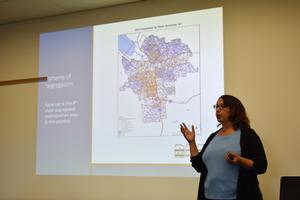 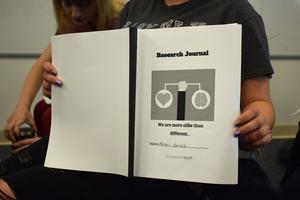 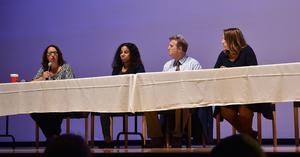 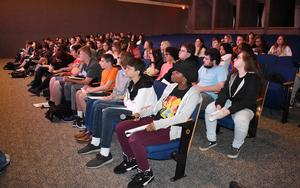 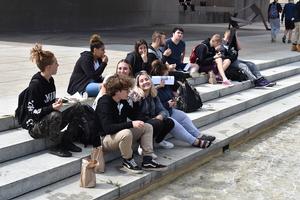 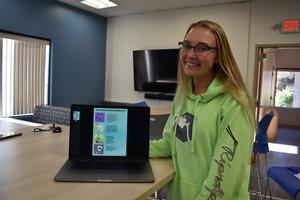 |
- ADULT ED
- FULL-TIME CERTIFICATION
- Admission Procedures
- Enroll Now
- Net Price Calculator
- Refund Policy
- Tuition Assistance
- K-12 PROGRAMS
- POPULAR K - 12 PROGRAMS
- Career & Technical Education
- Special Education
- Innovative Education
- Innovation Tech
- Seven Valleys New Tech
- MISCELLANEOUS
- APPR & Common Core
- Crayon Box Daycare
- Newsletters
- CONNECT WITH US
- ParentSquare
- SchoolTool
- FOR TEACHERS
- Lesson Plans
- Literacy Strategies
- MTSS Website
- INSTRUCTIONAL SUPPORT
- LEADERSHIP RESOURCES
- APPR
- BCIC
- Deadlines - Reports, Certs & More
- Leadership Training
- Principal Groups
- OTHER RESOURCES
- ADAPEP
- Regional Crisis Intervention Team

 Careers
Careers
 Staff Only
Staff Only
 Personnel
Personnel
 Sub Call-In Service
Sub Call-In Service
 Health & Safety
Health & Safety
| CONTACT | |
| Main Operator | 315.433.2600 |
| District Superintendent | 315.433.2602 |
| Adult Education | 315.453.4455 |
| Business Office | 315.433.2614 |
| CNYRIC | 315.433.8300 |
| Instructional Support | 315.433.2627 |
| Student Services | 315.433.2604 |
| Labor Relations | 315.433.2629 |
| Personnel | 315.433.2631 |




